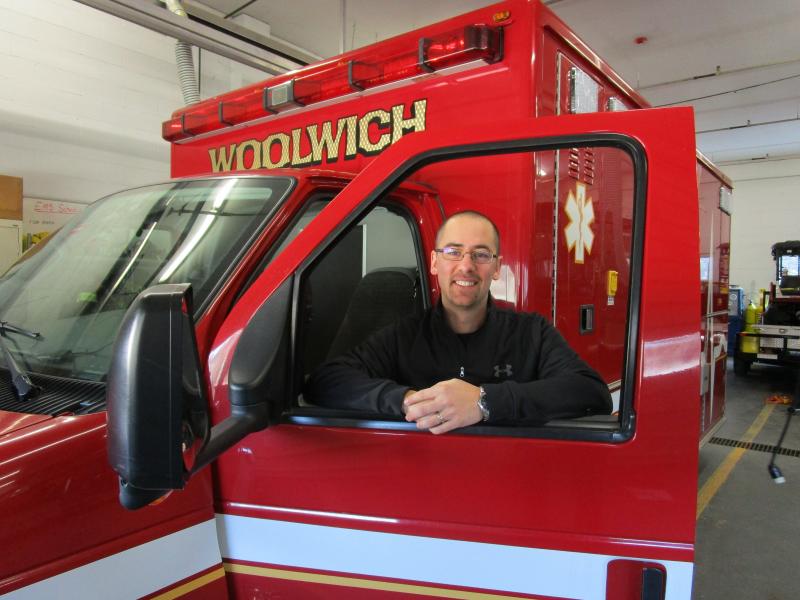Informational meeting to air Woolwich ambulance options
The future of Woolwich’s ambulance service will be discussed at an informational meeting 6:30 p.m. Tuesday, Feb. 5 in the cafeteria of Woolwich Central School.
EMS Director Brian Carlton and Fire Chief Mike Demers will explain three ambulance coverage options. One would expand the town’s EMS department to provide all of the town's ambulance coverage needs.
Since 2004, the town has relied on community volunteers and North East Mobile Health for providing 24/7 coverage. The town’s contract with North East Mobile Health expires in June and the select board has no contract discussions scheduled with the Brunswick-based ambulance service.
Carlton and Demers began exploring alternatives last fall, including the cost of the town financing its own ambulance service. They offered three options to the select board in December reviewing them again at the board’s first meeting in January.
The board will leave it to voters to decide between the options but have not decided whether to do this at the annual town meeting in May or the June election. The choice will be between expanding the town’s own EMS services or continuing to rely on a volunteer-based service that will include contracting with an outside EMS provider, Carlton told the Wiscasset Newspaper.
Option 1, he explained, involves hiring one ambulance member to be on call at the station from 6 to 6 Monday through Friday. The remaining coverage would continue with volunteer members.
The cost including payroll, stipends, administration and other fees is estimated at $146,640, said Carlton. Estimated revenues are projected at $72,000 reducing the net cost of the service to $74,640.
Option 2, continued Carlton, would have two EMS personnel on call 24/7 living within a certain distance of the fire station. Ambulance members on call would be paid a stipend of $35 to $50, per 12-hour shift and the responding crew paid hourly. The cost including payroll, stipends, administration and other fees is estimated at $144,640.
Carlton said hiring the additional EMS reduces stipends and the per diem payroll. The projected annual revenues remain the same, $72,000, reducing the net cost of Option 2 to $72,640.
The third option, Carlton said, basically carries on what the town’s EMS department currently offers as far as coverage goes, paying ambulance members responding from home an hourly rate.
The proposal includes increasing the current stipend paid to ambulance members from $12,000 to $22,000. Option 3 would cost an estimated $88,850. Revenues are again projected at $72,000, resulting in a net cost to the town of $16,850.
All three options, Carlton noted, include monies budgeted for contracting EMS services with Bath: $5,000 in Options 1 and 2 and $10,000 for Option 3.
“The amount is more in Option 3 because there’s no guarantee local ambulance members can cover all the emergency calls, in which case they’d be covered by Bath EMS,” he explained.
The EMS director and fire chief told the board they prefer Option 2. Carlton said when the projected revenues are figured in, the town would be spending about $25,000 more for ambulance services than what it’s currently spending.
This past year, voters raised $48,500 for EMS including staffing and stipends. Carlton said, in 2018 Woolwich EMS had 229 ambulance calls responding to all but 12 of them. Thirty-eight of those calls were for transports, he added.
Carlton and Demers believe manning the ambulance station will increase Woolwich’s mutual aid capabilities and create more revenue opportunities.
“The department’s revenue has been increasing each year primarily from the increase in the number of transports,” Demers recently told the select board. He and Carlton’s revenue projections were based on making an average of 240 calls per year. There were 251 emergency medical calls in 2017.
Carlton and Demers have told the board going it alone would mean the town would need to consider buying and equipping a second ambulance.
The cost for buying and equipping a used one is estimated at $32,000 to $45,000, according to Carlton. The town’s current ambulance, a used Ford Trauma Hawk, was bought in September 2015 from Harpswell Neck Fire and Rescue. It has 40,000 miles on it.
Select Board Chairman David King Sr. said he hasn’t heard back from Bath officials to discuss contracting with their EMS for supplemental ambulance coverage. “I hope to have an answer from them before the informational meeting,” he said Jan. 28.
He said North East Mobile Health officials haven’t returned the town’s requests to discuss a new ambulance service contract.
Event Date
Address
United States
























